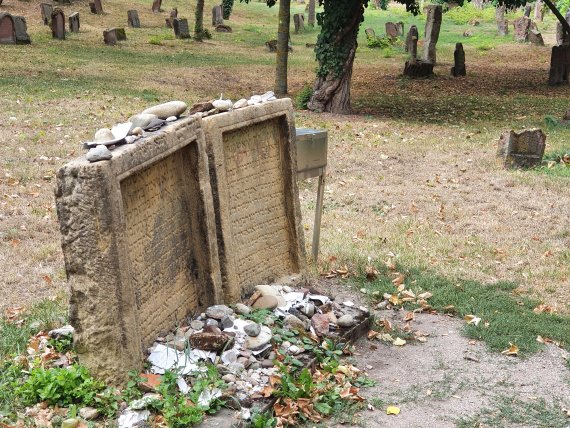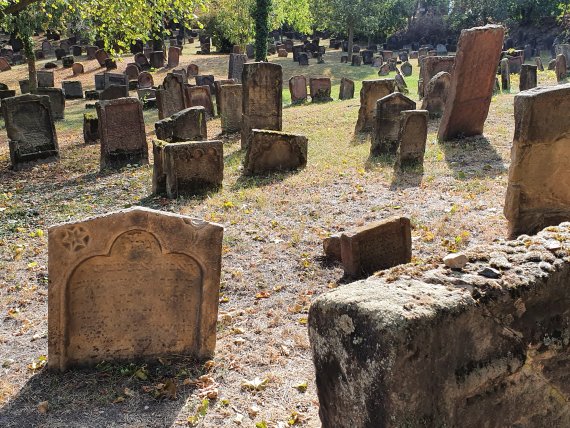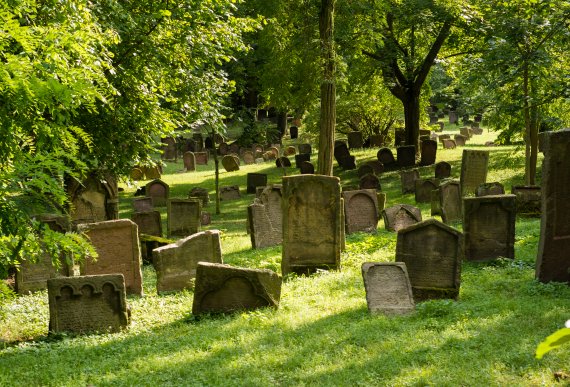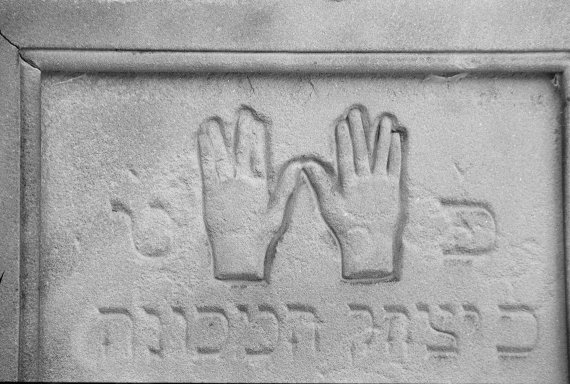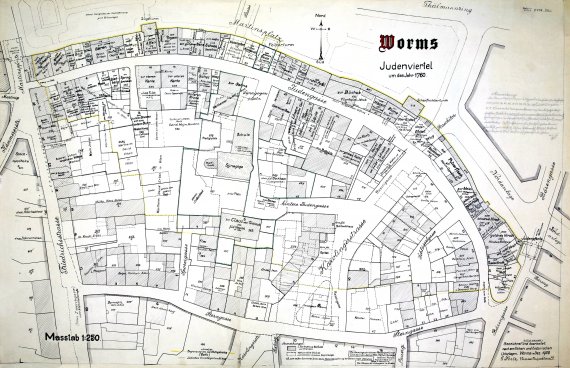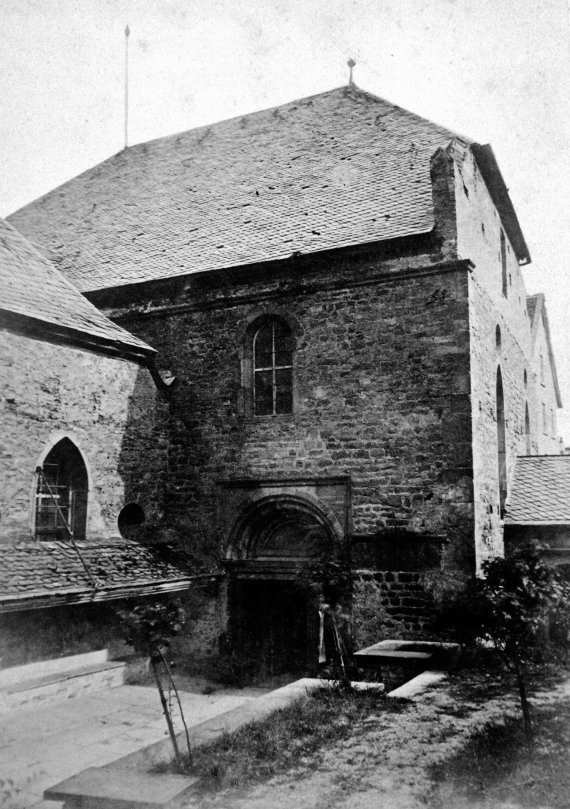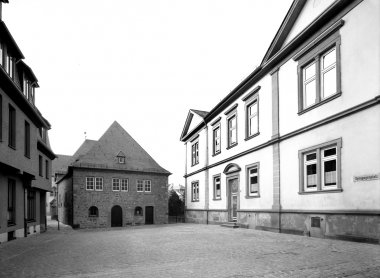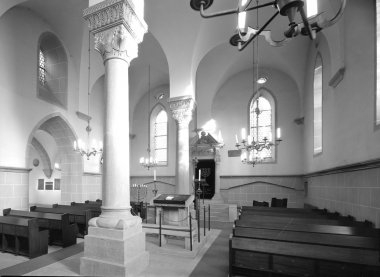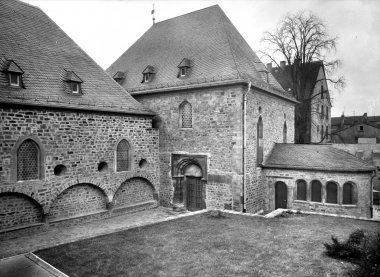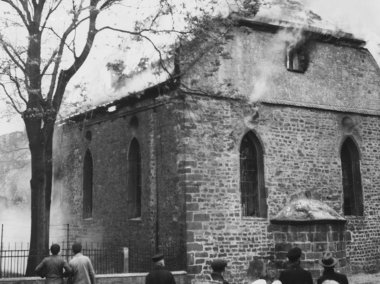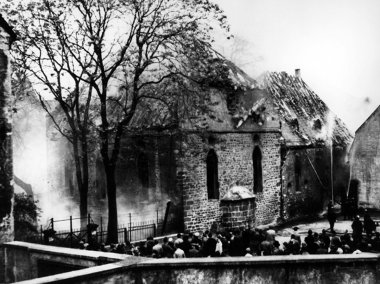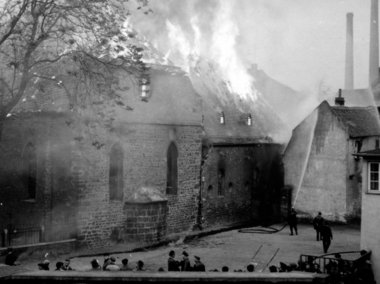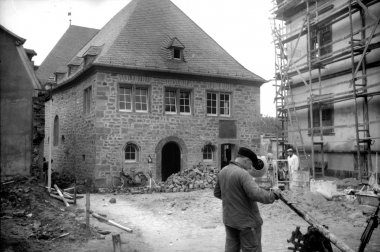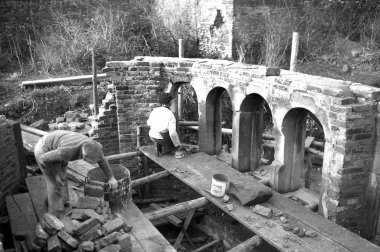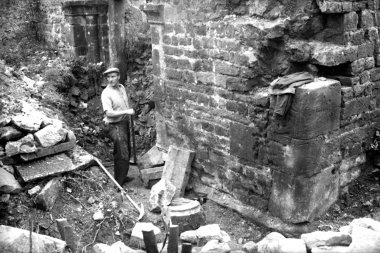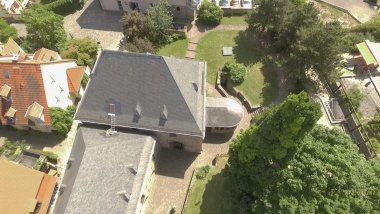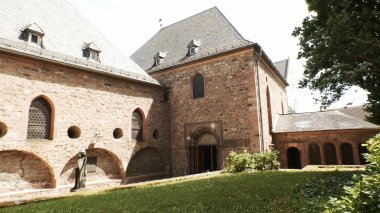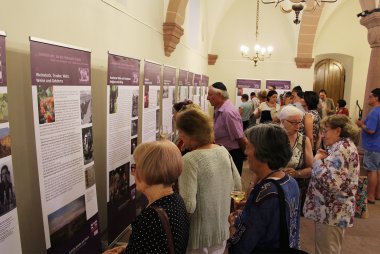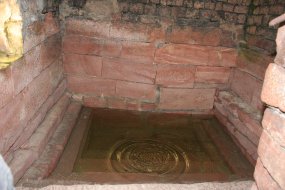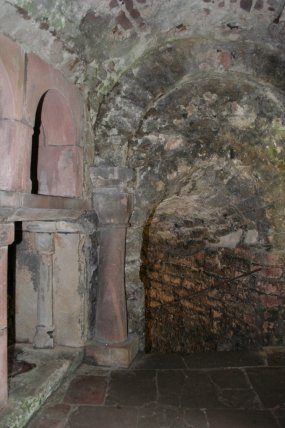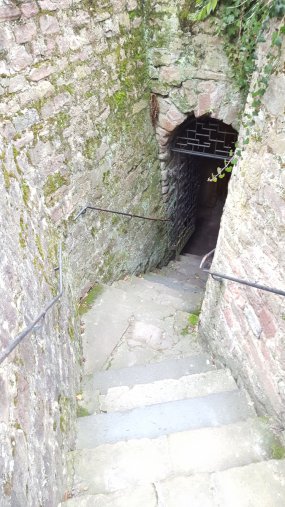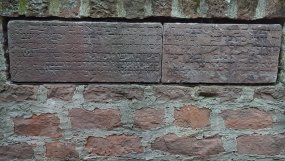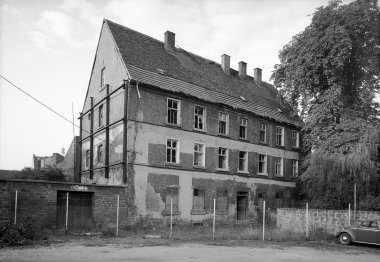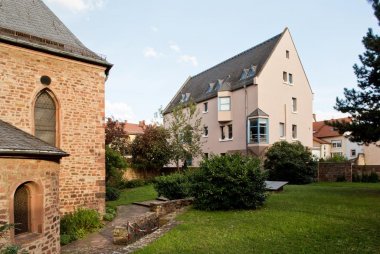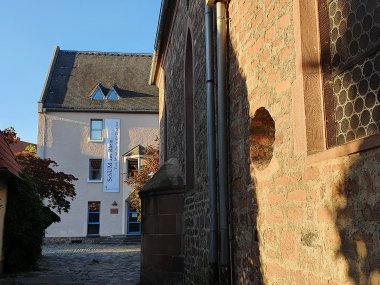Worms
»Heiliger Sand«/»Holy Sands«: the oldest Jewish cemetery in Europe
The Jewish cemetery in Worms is the oldest preserved in situ in Europe. Tombstones seen here are dated back to 1058/59. Graves of significant scholars are found here as well as those of martyrs or ordinary community members - and half of them were placed here for women. The tradition of travelling to the graves of scholars is known since the 14th century.
Among those buried in Worms are:
-
Malka bat Chalafta, Cabnor (died 1228),
-
Jochewed bat Jechiel ben Ephraim (died 1287),
- Rabbi Meir von Rothenburg, called MaHaRam (died 1293),
- Alexander ben Salomon Wimpfen (died 1307),
- Rabbi Nathan ben Isaak (died 1333),
- Rabbi Jakob ben Moses haLevi, called MaHaRil (died 1427),
- Rabbi Meir ben Isaak (died 1511),
- Elia Loanz, a Baal-Shem (died 1636).
The cemetery survived medieval expulsions and pogroms and even the Shoah – not always completely unscathed, yet without suffering major damage or having numerous stones removed, so that some 2,500 stones are witness to the history of the community.
An initial documentation project of the cemetery in the 19th century remained unfinished. Following up on this, accompanying the application for UNESCO- World Heritage Status, the work of historical inventory of the gravestones will continue, for the most part by Prof. Michael Brocke and his team from Salomon Ludwig Steinheim-Institute for German-Jewish History at the University Duisburg-Essen. The project is financially supported by the Antiquity Association Worms.
The 1000 year history of the Worms’ community came to a brutal end with the last deportations in September 1942 – but the significance of ShUM did not end with the Shoah. During the past few years a new Jewish community has revived the former ShUM area in Worms.
Structural Ensemble: Jewish life in Worms
In Worms, a clear impression of the urban situation and thus of the course of the medieval Jewish quarter is possible: city wall remains, entrance gates and the rebuilding of the Judengasse along the original course of the street from the 1960s onwards make it possible to experience the former atmosphere topographically and atmospherically. It should also be noted that there are historic cellar vaults under some of the newly built houses, many of which have already been investigated by the preservation of historical monuments. The houses Judengasse 11/13 can be traced back to the 13th century. They are significant testimonies - though not relevant to the UNESCO application.
The ensemble with the synagogue, the women's shul and the mikveh in Worms in Judengasse and Synagogenplatz is central to the Jewish heritage of the ShUM sites - as a monument and as a space of remembrance. The synagogue, which was rebuilt or recovered after the Shoah, with its women's school and vestibule, as well as the Judenratsstube and Rashi yeshiva, bears witness to various layers of Jewish and non-Jewish history over different epochs and centuries. As a result, a space singular in Germany and Europe has been created in and around the Worms synagogue, which reflects Jewish tradition and narratives, but also behavioral patterns of the non-Jewish majority society in different times.
Synagogue and Women's Shul
The synagogue consecrated in 1034, severely damaged during the pogroms of 1096, was slightly moved in 1174/75, but immediately and close to the original construction, replaced by a new synagogue. A women's shul - the first ever known - extended the building from 1212/13. After destructions during the pogroms from 1349 and the following reconstruction, the interior was changed.
After anti-Jewish riots in 1615, the building had to be repaired again; at the same time, the community decided to expand it. One of the centerpieces was a semicircular niche (apse), which since the 18th century gained fame and even legendary status as the Rashi Teaching Room or Rashi Yeshiva. Rashi did not teach there, but it is the idea and ideal of Rashi that holds its place there. The Women's Shul received a porch - a vestibule to the Women's Shul and a Judenrat room on the second floor. This front is the first thing visitors see today when they enter the synagogue square.
War and reconstruction in the 17th century resulted in the appearance of the building as it was known throughout the world until its wanton destruction in the November pogrom of 1938. The ruins of the 1938 fire were blown up in 1939; the remains, which were about six feet high, remained protected from the rubble surrounding them during the war.
The daily newspaper "taz" published an article on the occasion of the 80th commemoration day of the November pogroms in 1938, in which the role of the city archivist Illert and his self-stylization as a savior of the Jewish heritage is critically examined.
After the end of the Shoah, SchUM's reputation was still unbroken. Surviving Jews awaiting emigration from Europe in camps for displaced persons visited Worms to pay tribute to this site of historic Jewry. But ShUM was also self-affirmation that Jewish memory of scholarship, traditions, and history outlasts all physical destruction.The Worms’ synagogue in the Jews Alley or rather, at the Synagogue Square, is – as a monument and as a memorial room - of highest significance for the Jewish heritage and ShUM.
Just across the street from the rebuilt synagogue stands a residential building on the site of Levy's synagogue, which was dedicated in 1875. This was desecrated and vandalized in 1938, but was not set on fire because of the dense development. Further destroyed during a bombing raid in January 1945, the city removed the ruins in 1947. A small plaque commemorates the former Jewish house of worship.
In the 1950’s the city, state, and federal governments decided to rebuild the synagogue. Construction plans, photos, and reports served to ensure the highest possible historical accuracy. Original structural elements which had been salvaged as well as the donor’s inscription for the first synagogue from the 11th century could be re-used, as could the legendary Chair of Rashi. The foundation walls, visible today, originated from the years 1175/75. The new consecration followed in 1961. The fact that Jewish emigrants and survivors reacted very differently to the non-Jewish initiative to rebilut the Synagogue after the Shoah is understandable. Some of them approved of the reconstruction, others rejected it as no Jewish community existed back then in Worms.
The rebuilding of the synagogue compound could not, and cannot make up for what the community had suffered after 1933. More than 70 years after the end of the Shoah, however, Jewish life has made room for itself in Germany – and the synagogue in Worms is a part of that. The Jewish community Mainz-Worms is proprietor of the Mikveh and the Synagogue. The Worms Synagogue conveys a lasting impression of the unbroken relevance of the attraction and significance of the ShUM-city of Worms. It summarizes history and present as layers of history.
Anna Kischner, Head of the Jewish Community of Mainz, welcomed participants to a conference who visited the Worms Synagogue in April 2018: »The time-honored synagogue in Worms, although rebuilt after the Shoah, is not only a place of remembrance for us Jews in Mainz and Worms, but also worldwide , The synagogue, as modest in its dimensions and features as it is, reflects for us Jews the light and dark eras of the history of the Jews in Germany. We are the owners and see in the house far more than a historically significant monument. We perceive it as a living memorial to the changing history of Jews on German soil. And at the same time it is our synagogue for us, which is finally filled with Jewish life again.«
A tower in the earth - the Mikveh
What survived, concealed from the destruction of the Crusades, Pogroms and even the Shoah, was the mikveh, donated in 1185/86. The underground ritual bath was created as a close adaptation of the one in Speyer, although a bit smaller, and is therefore an outstanding monumental mikveh. It has been the subject of architectural and historical research for years, and methods of restoration and careful restoration have been researched. On the basis of this research, the mikvah will be secured and carefully restored. The mikveh is closed to visitors and groups since November 2016. A website informs you about the Mikveh and its maintenance: Mikveh Worms
Rashi-House
Near the synagogue one can visit the Rashi-House. Until 1971, the Community's House of Teachings, Dance, and Weddings, which was also the hospital and retirement home, stood on the same spot. After the last deportations from Worms to the Nazi-camps it got into ownership of the City and was totally reused, for example as a place for the homeless. It deteriorated and was torn down in 1971. The city erected the new building above the authentic cellar vault in 1980/82. The City Archives and the Photo Archives are housed there, as well a Jewish Museum which exists since 1982. The cellar vaults dating back to the 12th/13th century and a wall with Pietra Rasa comparable to that in the Mikveh, are spectacular. They are integrated into the new exhibition of the Jewish Museum Worms.
Website on the new Exhibition

